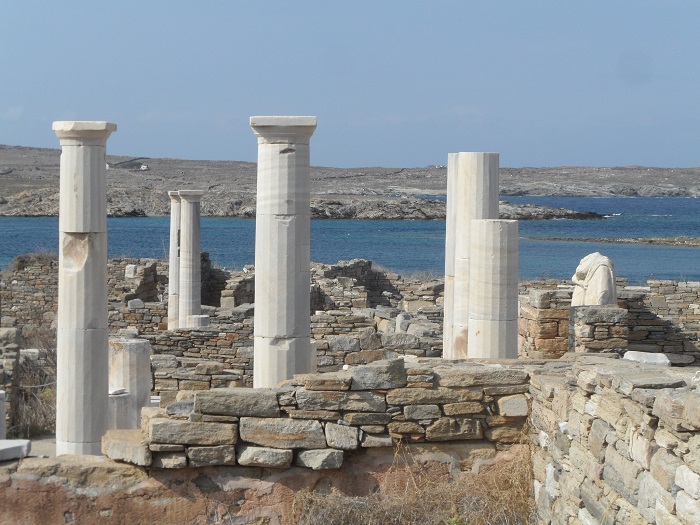
Join Thor and me as we start our tour of ancient Delos with the mazelike residential and theater quarter.
NOTE: Since our recent trip to Greece to research more settings for my novel-in-progress, THE ARIADNE DISCONNECT, Thor and I knew we had to return to this magical region. My first entry in this new blog series posted here on Saturday, 10/20/2018. It gives an overview of our rambles from Athens to seven islands in the Dodecanese and Cyclades groups, ending our ferry-hopping pilgrimage on the anciently sacred island of Delos.
I was excited to end our Greece trip with a boat excursion from Mykonos and day tour of Delos and its extensive ancient site. We’re not usually fans of following tour guides in a group, but it’s the only practical way to visit the site and make sense of the widespread ruins. So we set off in the morning past the windmills near Mykonos harbor.
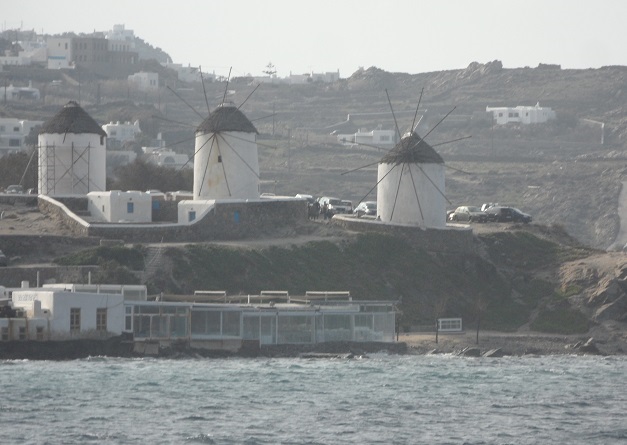
Delos, one of the most important historic sites in Greece, was settled by the 3rd millenium B.C. The original inhabitants were apparently pirates who were expelled by King Minos of Crete, when the Cretans dominated trade in the Mediterranean and Aegean. We docked in the ancient harbor, near the residential and theater quarter that was the first part of the tour.
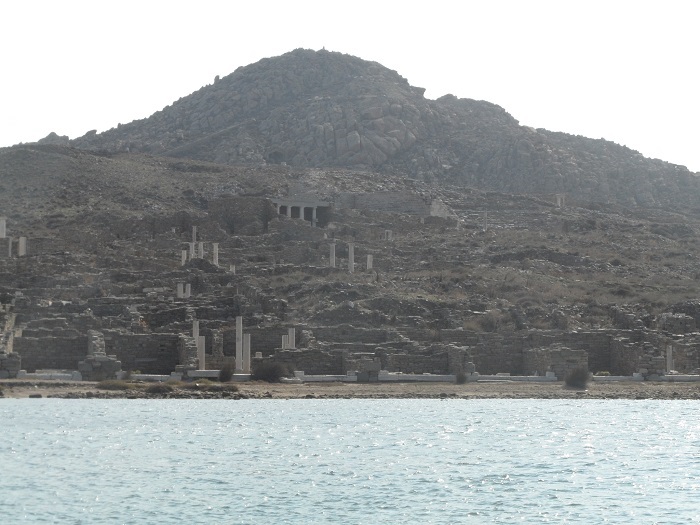
After the Cretans, the development of Greek Olympian mythology held that the twin deities Apollo and Artemis were born on the island. Apollo became the main deity worshipped here, along with many others, including Dionysos and the Egyptian Isis. In the 6th and 5th centuries B.C., purifications of the island were undertaken by Athenian rulers, partly under advisement of the Delphic Oracle. All buried bodies were removed to a nearby island, and thereafter it was forbidden for anyone to die or give birth on the island. Later, all inhabitants of the islands were relocated. Today no one may live here except the few archaeologists engaged in excavations. Only about a third of the extensive settlements and temples have been excavated so far.
Many of the statues and images of Apollo were destroyed by invaders or taken away, but here’s a kylix vessel featuring the god of music and reason, with his spirit-animal the raven, from the museum at Delphi:
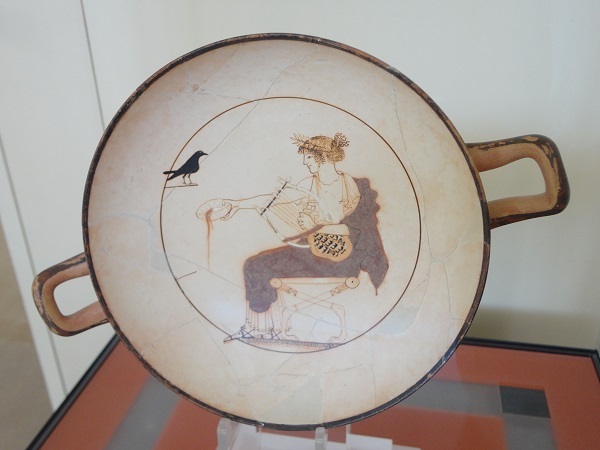
This statue of his twin sister Artemis from around 200 B.C., found in the Delos residential quarter, is unusually demure for the goddess of wilderness and hunting. She was also the deity of virginity and childbirth (those Olympians liked to mix it up).
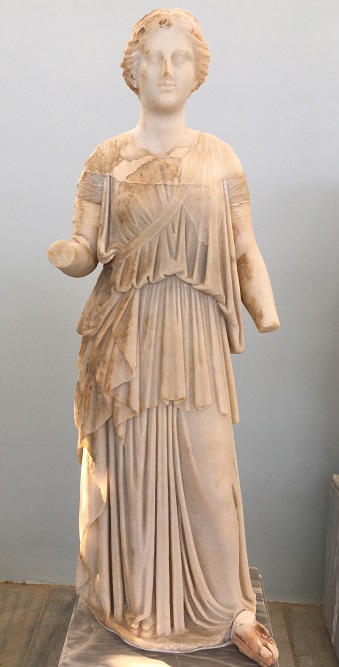
We’ll see more of the twin deities and their stories in next week’s blog post, so stay tuned….
Despite my resistance to an organized tour, I was delighted when we met our archaeologist tour guide and learned her name: Ariadne. Thor said it was an omen of good luck for my novel-in-progress, The Ariadne Disconnect.
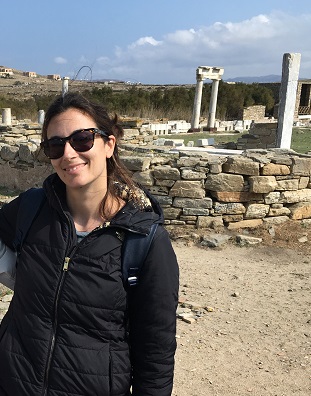
The original Ariadne was the daughter of King Minos of Crete, the ruler who had driven out the original pirates from Delos. Ariadne famously helped the Athenian Theseus slay the Minotaur monster and escape its labyrinth. And speaking of mazes, that’s what the crowded ancient township of Delos looked like, with narrow lanes twisting among rock walls of houses and shops:
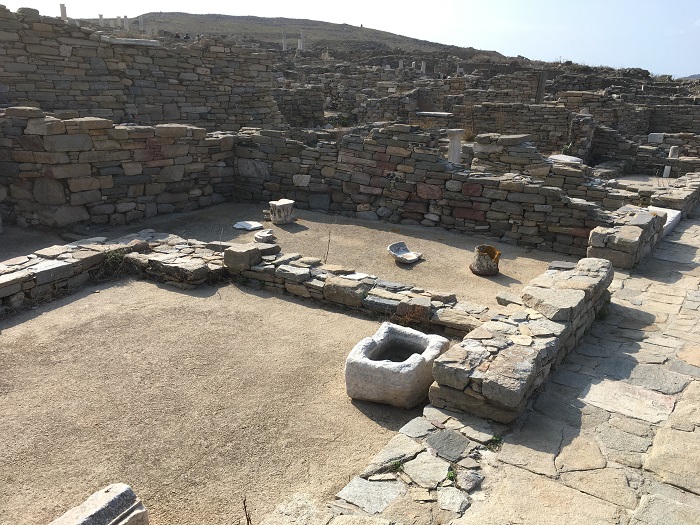
In this overview I snapped on the way up the highest hill on the island, the residential/theater quarter extends to the left from the docked boats. Even a day of hiking around didn’t allow us time to see all of the dwellings and temples restored so far. We may have to return!
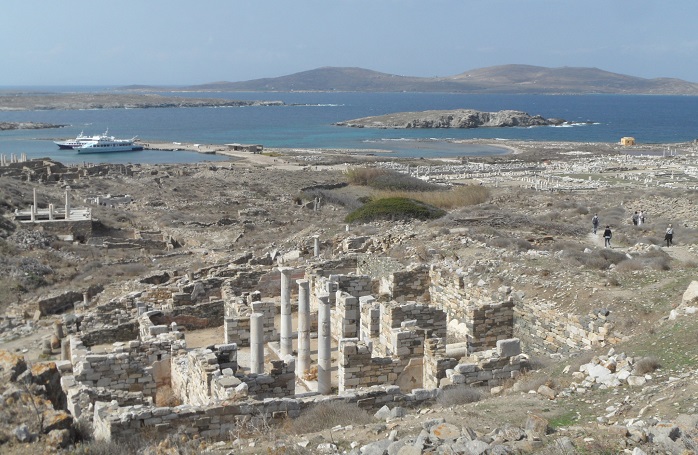
Hang on as we fly down with Apollo’s raven into the narrow stone passages of the residential/theater quarter:

Because the town grew haphazardly along with shipping commerce on the island, there was no street plan, houses and shops crammed together with no provision for public latrines. (The private houses did have septic drainage systems emptying into the bay.) According to ancient historians, women rarely ventured out into the public areas, and men would relieve themselves in the cobbled lanes. Special funds were allocated for cleaning up the feces. (I’m sure you wanted to know that.) Our guide Ariadne did point out the plumbing facilities in one of the houses of the wealthy, which originally had seats over the drain and running water:
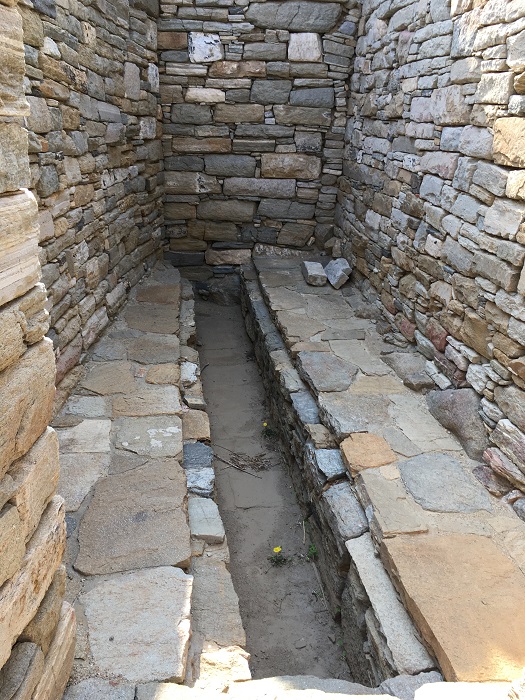
Taking a look at some of the house walls and restored columns, we realized there’s a lot of work for the archaeologists to piece everything together:
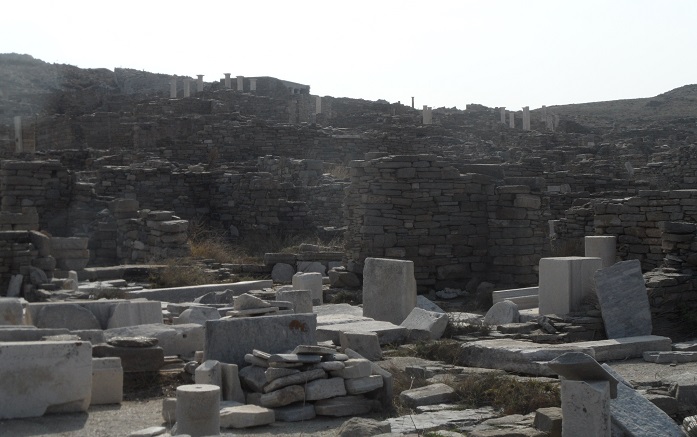
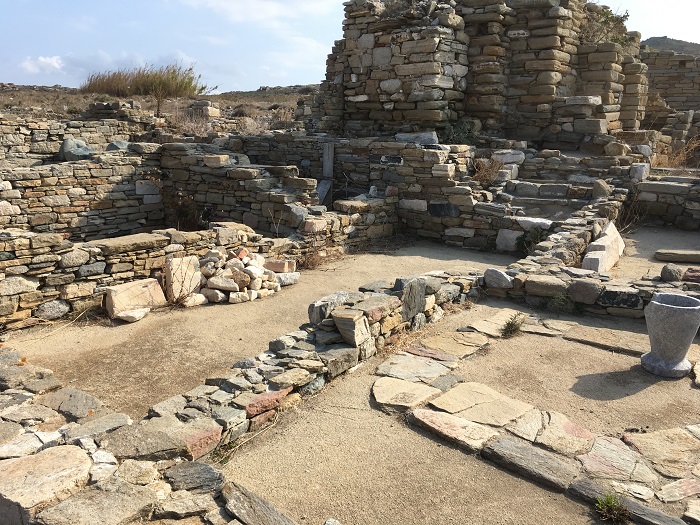
Though the main structures had field-stone walls, many were fitted with marble columns and door and window framing:
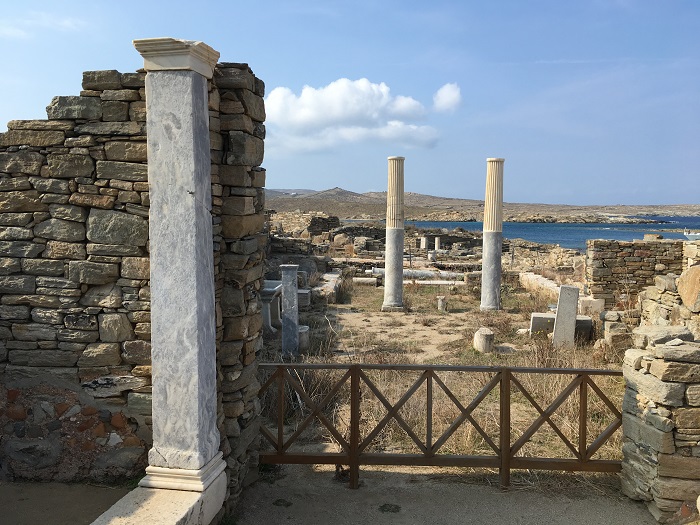
The holes in this window frame were apparently for protective metal bars:
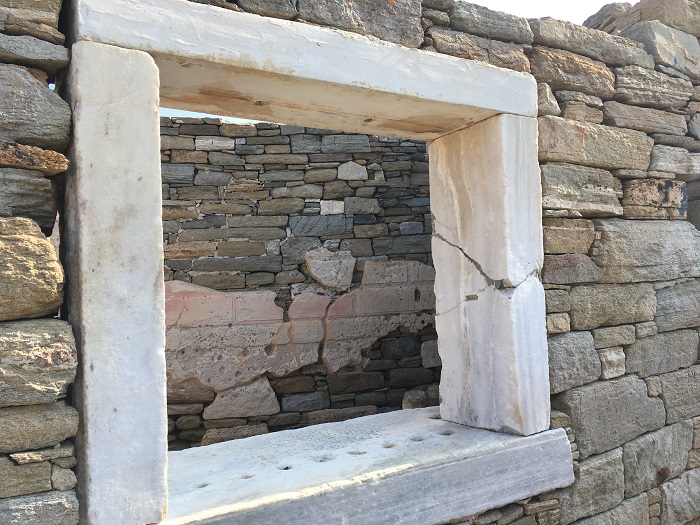
Beautifully-fitted marble blocks in this wall:
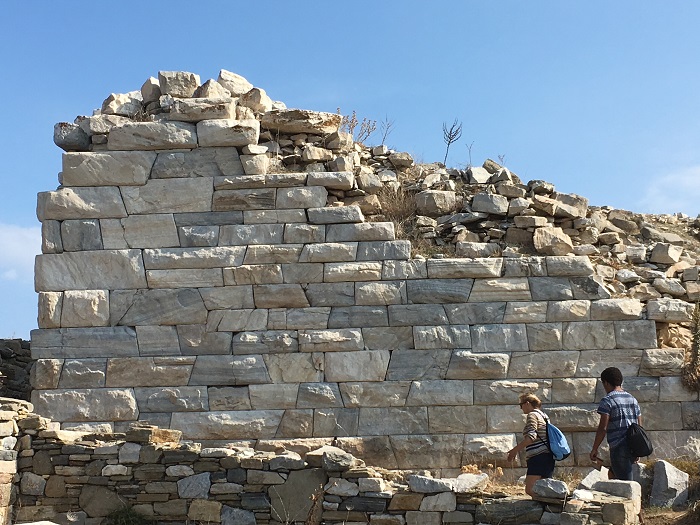
The function of this structure was unclear, but Thor always admires the stonework of these intricately fitted pieces:
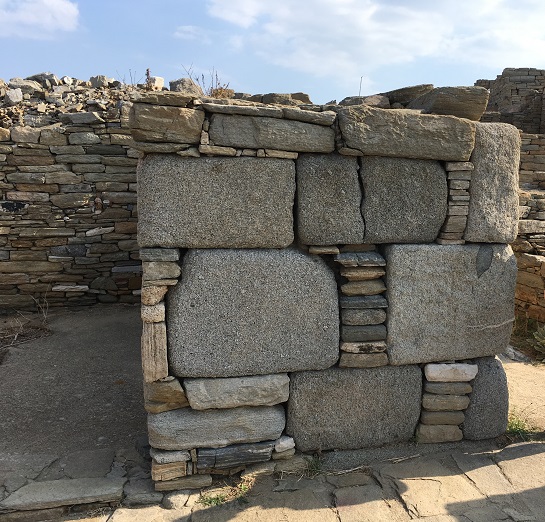
Wealthy inhabitants from around 300 B.C., Cleopatra (not the Egyptian queen) and her husband Dioscourides had statues of themselves in their house. Now headless, they still gaze out to sea:
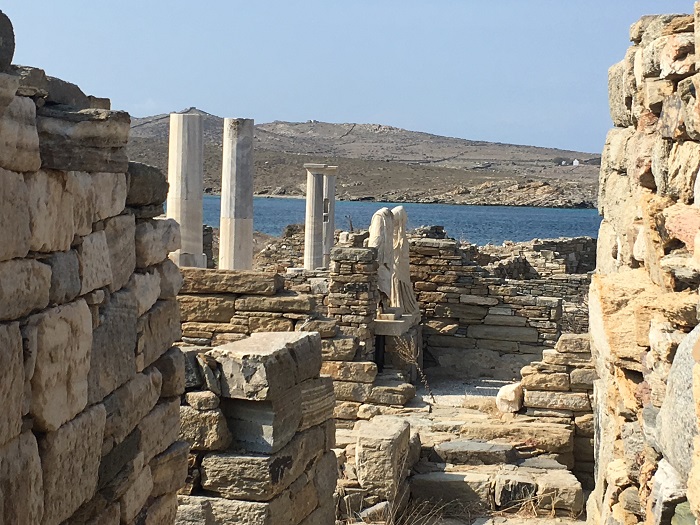
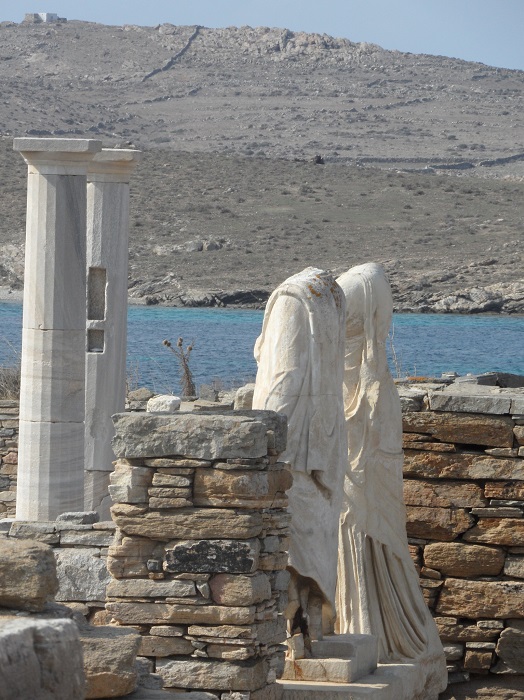
The homes of the wealthy were known for intricate mosaic floors, often portraying mythical figures. The House of Dionysos is famous for its mosaic of the god with wings, riding a tiger.
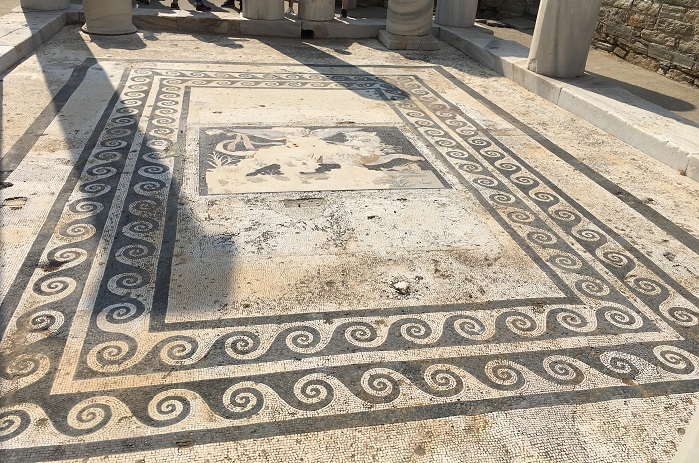
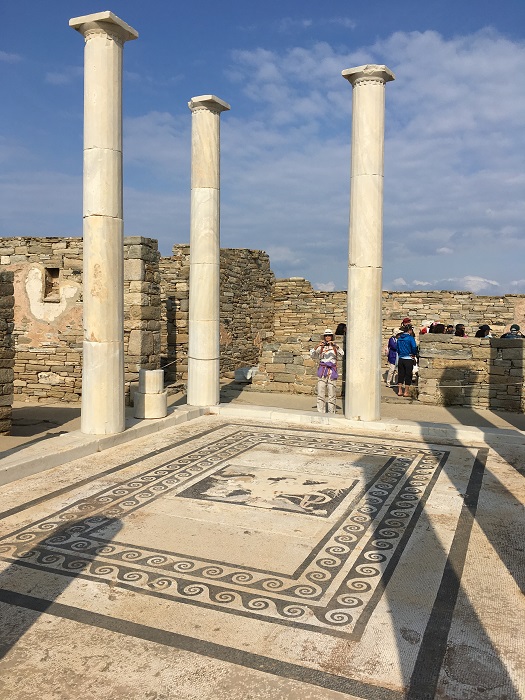
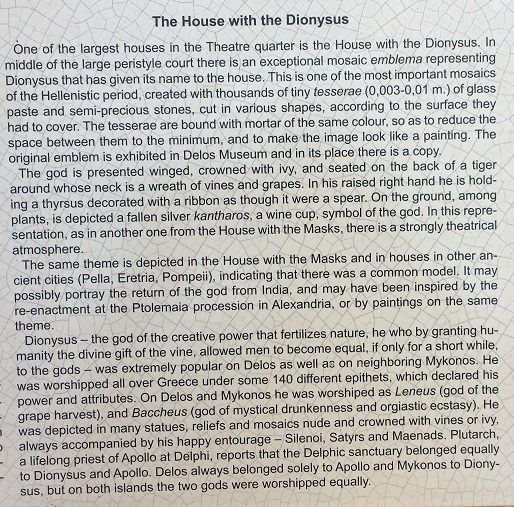
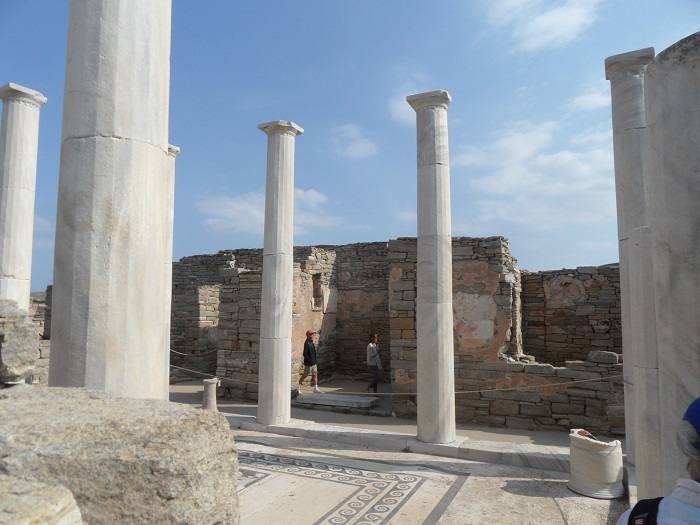
If you’ve followed my blog posts from my visit to Delphi in 2017, you know that Dionysos is one of my favorite deities of the Greek pantheon. He also happened to find the original Ariadne on his island of Naxos, after she’d been abandoned by the fickle Theseus whom she’d rescued. Dionysos and Ariadne married and lived happily ever after, and he’s an underlying mythical force in my novel-in-progress. We’ll see more of him in next week’s post…. Meanwhile, here’s the original mosaic now housed in the Delos museum. The one in the open-air house reconstruction is a very good replica. I was relieved to see that what remains of the original is being protected. The detail and vivid colors are truly amazing.
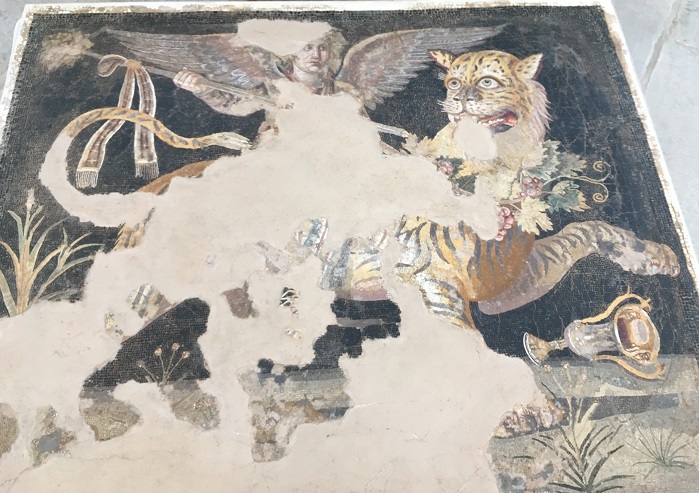
Of course, one of the attractions of this quarter is the ancient open-air theater with a seating capacity of 6500 on its tiered stone seats.
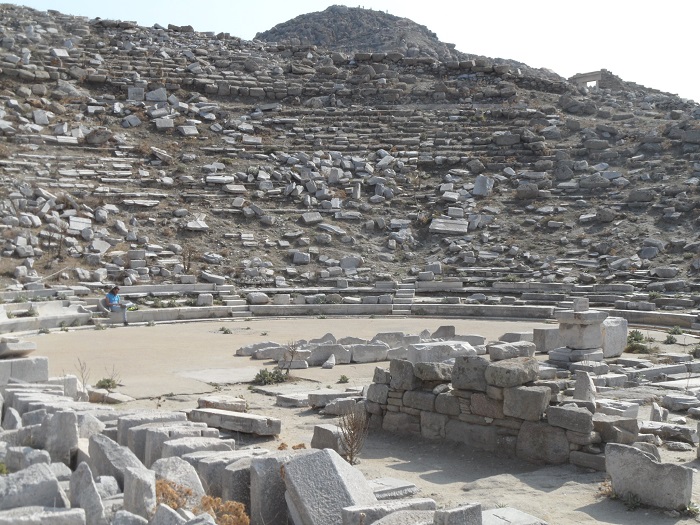
Water is scarce and valuable on this dry, rather barren island, and any rain falling on the theater was funneled into a large cistern that all residents could use:
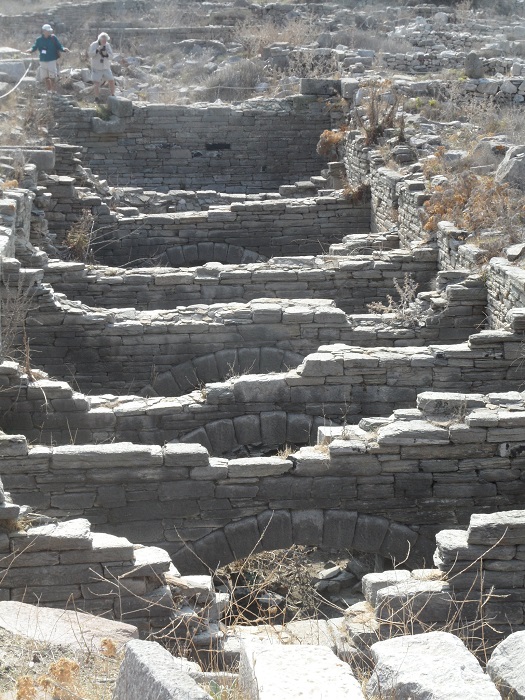
I was surprised to see sheep grazing the scrubby hillside, so there must be surviving sources of water for them:
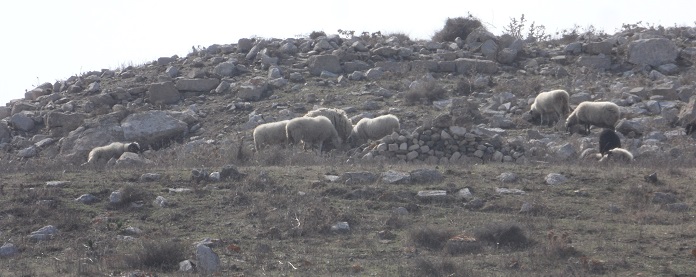
Next week: Stay with us as we trace ancient footsteps through the Sanctuary of Apollo to the (now-drained) sacred lake guarded by marble lions:
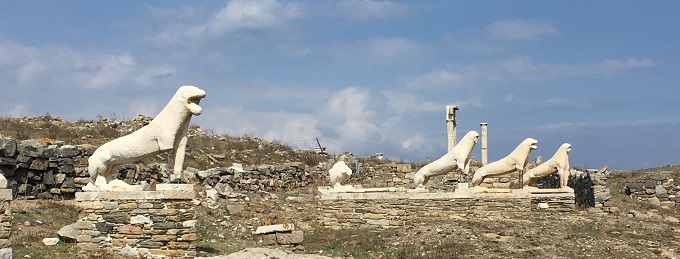
*****
You will find The Rambling Writer’s blog posts here every Saturday. Sara’s latest novel from Book View Cafe is available in print and ebook: The Ariadne Connection. It’s a near-future thriller set in the Greek islands. “Technology triggers a deadly new plague. Can a healer find the cure?” The novel has received the Chanticleer Global Thriller Grand Prize and the Cygnus Award for Speculative Fiction. Sara has recently returned from another research trip in Greece and is back at work on the sequel, The Ariadne Disconnect. Sign up for her quarterly email newsletter at www.sarastamey.com

1 thought on “The Rambling Writer Explores More Greek Islands, Part 36: Touring Delos Residences”